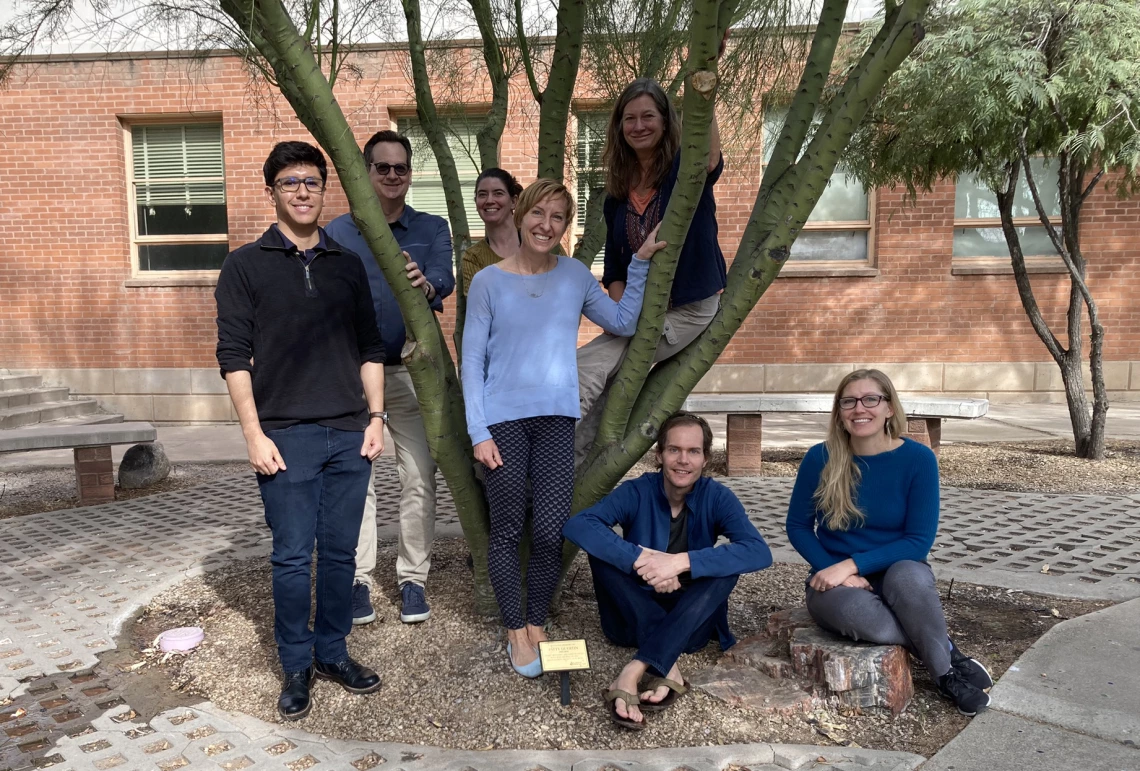Tracking nature’s calendar: National Phenology Network awarded $1.2M to monitor seasonal changes
The funding will allow the network to revamp their volunteer science app, Nature’s Notebook, empowering people nationwide to document and understand the impacts of changes in climate on ecosystems.

Members of the USA National Phenology Network team.
Ever wondered how the timing of blooming flowers or the migration of birds could reveal the story of how our planet is changing? The USA National Phenology Network (USA-NPN), headquartered at the University of Arizona, is on a mission to uncover those changes—and it just got a $1.2 million boost from the National Science Foundation (NSF) to keep the momentum going.

Theresa Crimmins, director of the USA National Phenology Network and an associate professor at the School of Natural Resources and the Environment.
"The USA National Phenology Network was established back in 2007, mainly in response to this awakening that the timing of seasonal events in plants and animals, which is what phenology is, is a really good indicator of how organisms are responding to rapidly changing climate conditions,” said Theresa Crimmins, director of the USA National Phenology Network and an associate professor at the School of Natural Resources and the Environment.
The award will allow the USA-NPN to overhaul their volunteer science application, Nature’s Notebook, by making it more accessible and engaging for a wide range of audiences. The funding will also support the network’s continued vital work of documenting the transformations happening in the natural world.
The USA National Phenology Network
The USA-NPN emerged in response to growing evidence that the timing of seasonal events—such as flowering, migration, and leaf-out—provides vital insights into how ecosystems are evolving. The USA-NPN is strategically situated at the U of A to serve as a hub for nationwide collaboration.
Today, the institution has amassed over 40 million phenological records across the country on close to 2,000 different species of plants and animals. From the beginning, the organization prioritized welcoming both scientists and non-scientists to engage in observing and documenting nature.
“One of the decisions we made really early on was that we don’t want it to just be scientists that are tracking things, we want this to be an inclusive adventure,” Crimmins explained. “This is a huge opportunity to engage non-scientists in understanding and witnessing and playing an active role in documenting what's going on, and then collectively telling that story about how things are changing.”
A volunteer science platform
At the heart of the USA-NPN’s work is Nature’s Notebook, a volunteer science application launched in 2009. The app enlists volunteers to record observations of plants and animals across the United States.
Initially, participants relied on paper datasheets to log their observations, which were later transcribed into an online database. However, this method posed challenges, including barriers to participation. Understanding the need for modernization, the USA-NPN introduced a digital app, which now thanks to funding from the NSF is set to undergo a significant revamp.
The updated app will function as a “digital datasheet,” making it easier for individuals to contribute meaningful data. The data collected through Nature’s Notebook will serve a broad audience, including scientists, decision-makers, and educators.
The USA-NPN operates on the front lines of climate science, piecing together the complex puzzle of how ecosystems are evolving in real time. By involving everyday people, the network has created a movement of volunteer scientists united by a shared curiosity for the environment. As the USA-NPN enters its 17th year, and through the support of the NSF, the network is poised to advance its mission of building a more comprehensive understanding of our changing world.
